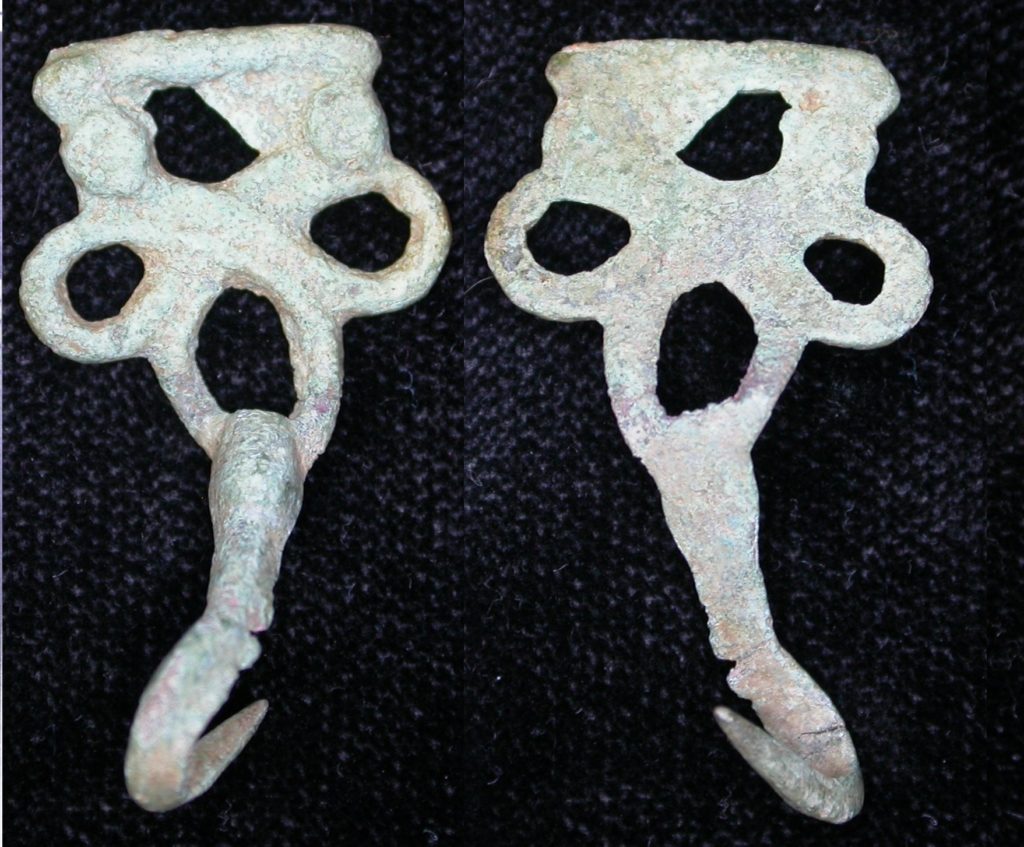A great many artefacts from Tudor times were discovered aboard the wreck of the Mary Rose. Mary Rose was the flagship of Henry VIII new Navy. She was a large gunship fitted out with cannons and was of the most modern shipbuilding design of the day.
The wreck of the Mary Rose was discovered in 1966, though she was not raised from the depths of the Solent until October 11th 1982. More than 20,000 Tudor artefacts were recovered from the Mary Rose and from the sea bed where she had lain undisturbed since the day she went down in 1545.
Mary Rose Artefacts
Contents
The artefacts that were recovered from the Mary Rose provide an invaluable insight into life on board the Mary Rose. Not much was ever really known about life on a Tudor ship, but the Mary Rose artefacts have been able to provide historians with a remarkable insight into life on board ship.

Personal items such as a brass shaving bowl and cut-throat razors were discovered as well as tableware, footwear and items of armour. The Mary Rose artefacts also shone a light on the medical practices of the time as a number of medicine jars were discovered along with a bleeding bowl and mortar.
An incredible amount of military artefacts were also discovered which included more than 8,000 arrows, 250 longbows and 50 hand guns, as well as the ship’s cannons which had been marked with the Tudor rose.
Anne Boleyn Surviving Artefacts
There are not a great many artefacts that remain that can be directly linked to Anne Boleyn. However, her Book of Hours does survive and provides us with a rare glimpse of the courtship between her and Henry VIII. The book is currently in the possession of the British Library in London.
Another Anne Boleyn artefact is The Anne Boleyn Clock. This very ornate golden carriage-style clock is believed to have been presented to Anne as a wedding gift from Henry himself.
The clock is currently a part of the Royal Collection in St James Palace. Another survivor is the Anne Boleyn Cup which was presented by Anne to physician Dr Richard Masters for the great care he took of her daughter the future Queen Elizabeth I. The cup is currently held at St John the Baptist Church in Cirencester.

Queen Elizabeth I Artefacts
More than four hundred years after her death, Elizabeth I is still remembered as the best monarch of England who took England to the peak of glory. Her reign of forty-five years was known as the Age of Gloriana.
Elizabeth I’s spent most of her childhood at the Royal Palace of Hatfield. She possessed a ring which was believed to have pictures of her’s and Anne Boleyne’s. The ring was passed on to her successors, King James I who gave it to the family.
The ring is known as the ‘chequers ring’ since it belongs to the trustees of chequers now. The ring also bears the alphabet ‘E’ in a table-cut diamond.
Henry VIII Artefacts
King Henry VIII, like his daughter, was fond of jewellery and fancy clothes which must have been preserved by his successors but are lost now. Possibly, the only surviving article from his office is the gold Coleridge collar that he gave to Sir Edward Montague, his closest friend and advisor.
It was a chain that Henry VIII adored greatly. Its design showed allegiance to the king and had intricate patterns. The metallic edge of the chain indicated the status of the one who wore it. It is sometimes considered to be the most important relic of the Tudor age.
Sir Edward was believed to have received the collar from the King on being appointed as the Lord Chief Justice. It was one of the highest judicial offices in London. The collar was a type of liver-collar which became popular after it was used by Henry IV.

The Bible belonging to Henry VIII is also preserved. It is bound in velvet which has faded now. The cover is decorated with initials by fine golden threads. In the centre, the initials ‘H.R’ are woven within a circle.
Some artefacts from Tudor times also include manuscripts and books written by the Tudors themselves. One such piece is a manuscript written by Princess Elizabeth Tudor is preserved at the British Museum. It is a book on vellum and contains prayers that were originally composed by Queen Catherine Parr.
It was originally written in English and then translated into Latin, French and Italian by Princess Elizabeth. It was dedicated to Henry VIII. The book is bound by tapestry stitch in red silk, interwoven by a golden thread.
Tudor era artefacts also contain the psalter of Queen Mary and some metallic covers and caskets probably belonging to Sir Thomas Wyatt and his family.
Various Tudor Artefacts on Display in Museums
A number of Tudor dynasty artefacts including items of Tudor Jewellery are on display at the Victoria & Albert Museum in London. Items in the collection include pendants and chains as well as seal rings. There are also jewelled prayer books and inkwells as well as several portrait miniatures of Queen Elizabeth and Mary Queen of Scots.
While there is no definitive Tudor jewellery museum, the V&A, as well as the British Museum in London, have excellent collections of Tudor artefacts, which not only contain items of Tudor jewellery but also items of armoury as well as many jewellery designs in their original form, which include the handmade drawings of the Tudor jewellers.
More Info On- Tudor Clothing Doublet, Dresses, Style Architecture, Rose Symbol, Tudor and Anne Boleyn Jewellery

